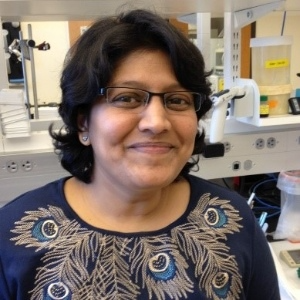Title : Assay identifies rVSV?G-ZEBOV-GP vaccination status and correlates Ebola virus glycoprotein with vesicular stomatitis Indiana virus nucleoprotein antibodies
Abstract:
In the absence of well-defined correlates of protection, the quantity and duration of the main vaccine-antigen-induced immunoglobulin G (IgG) antibodies are often used as proxy indicators of vaccine efficacy; IgG responses to vaccine vector antigens are less well-characterized. Here, we describe the concomitant kinetics of IgG responses to the vaccine vector (vesicular stomatitis Indiana virus) nucleoprotein (VSIV N) and the inserted Ebola virus glycoprotein (EBOV GP1,2) components of the “rVSV?G-ZEBOV-GP” vaccine. We also evaluate their use as biomarkers to confirm self-reported vaccination status.
Longitudinal samples from 212 participants through one-year post-vaccination from the Partnership for Research on Ebola Virus in Liberia I (PREVAIL I) clinical trial were selected. Anti-EBOV-GP1,2 IgG and anti-VSIV-N IgG titers were measured using the established Filovirus Animal Non-Clinical Group (FANG) enzyme-linked immunosorbent assay (ELISA) and a newly developed single-molecule array (Simoa) immunoassay, respectively.
Following vaccination, anti-EBOV-GP1,2 IgG and VSIV-N IgG were first detected at 10–14 d. Antibody levels further increased by 28 d and then remained stable through 360 d post-vaccination. Significantly higher antibody titers were measured in samples from female participants compared to those from male participants. Anti-EBOV-GP1,2 and anti-VSIV-N IgG titers were significantly correlated (p<0.001) at day 28 (r=0.47), day 180 (r=0.45), and day 360 (r=0.59). At 28 d, the area under the receiver operating curve (AUROC) discriminated vaccinated from unvaccinated patients with high accuracy (AUROC=0.965 for anti-VSIV-N IgG; AUROC=0.945 for anti-EBOV-GP1,2 IgG [p<0.001]).
We conclude that the newly developed assay reliably measures vector-targeted humoral responses after rVSV?G-ZEBOV-GP vaccination and can confirm vaccination status in individuals with unknown or self-reported vaccination status. Reliable detection of anti-VSIV IgG may be useful for similar queries of VSIV-vectored vaccine candidates in development for other infectious diseases.



